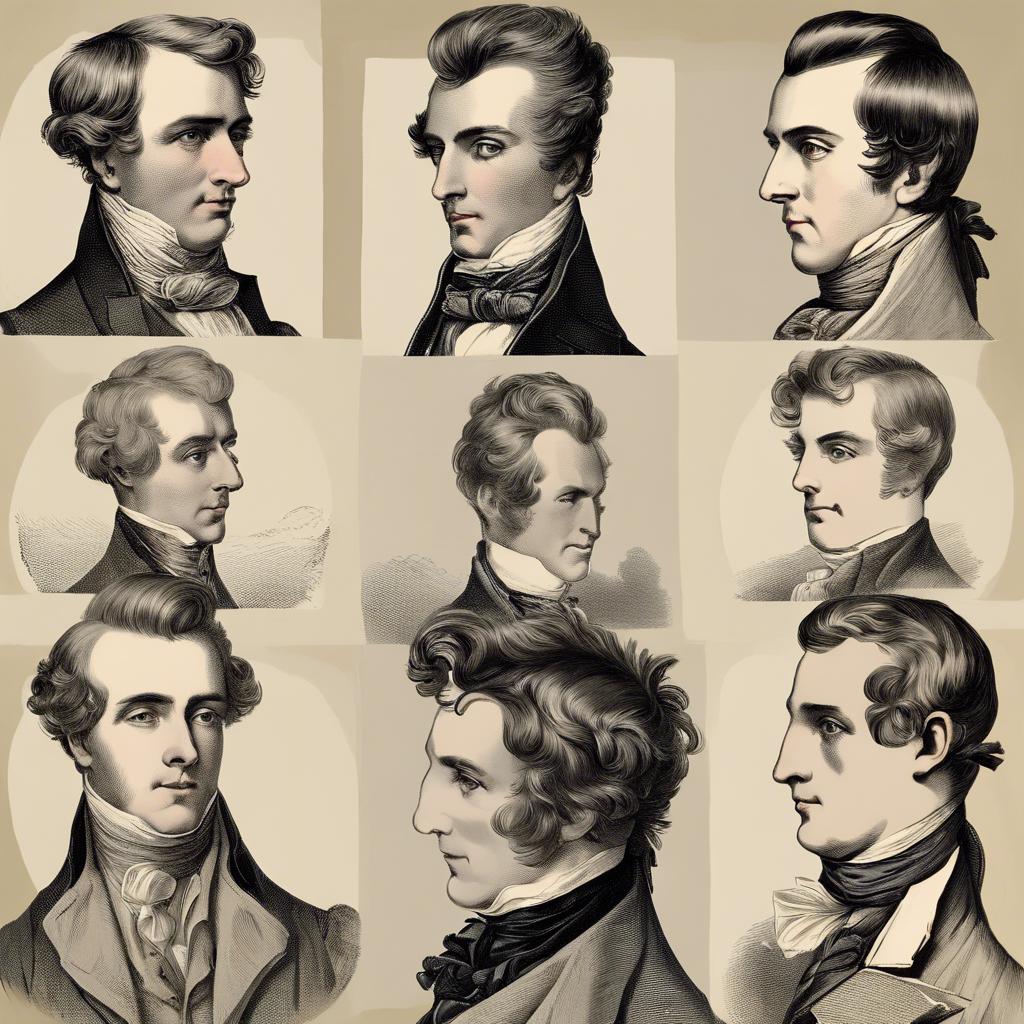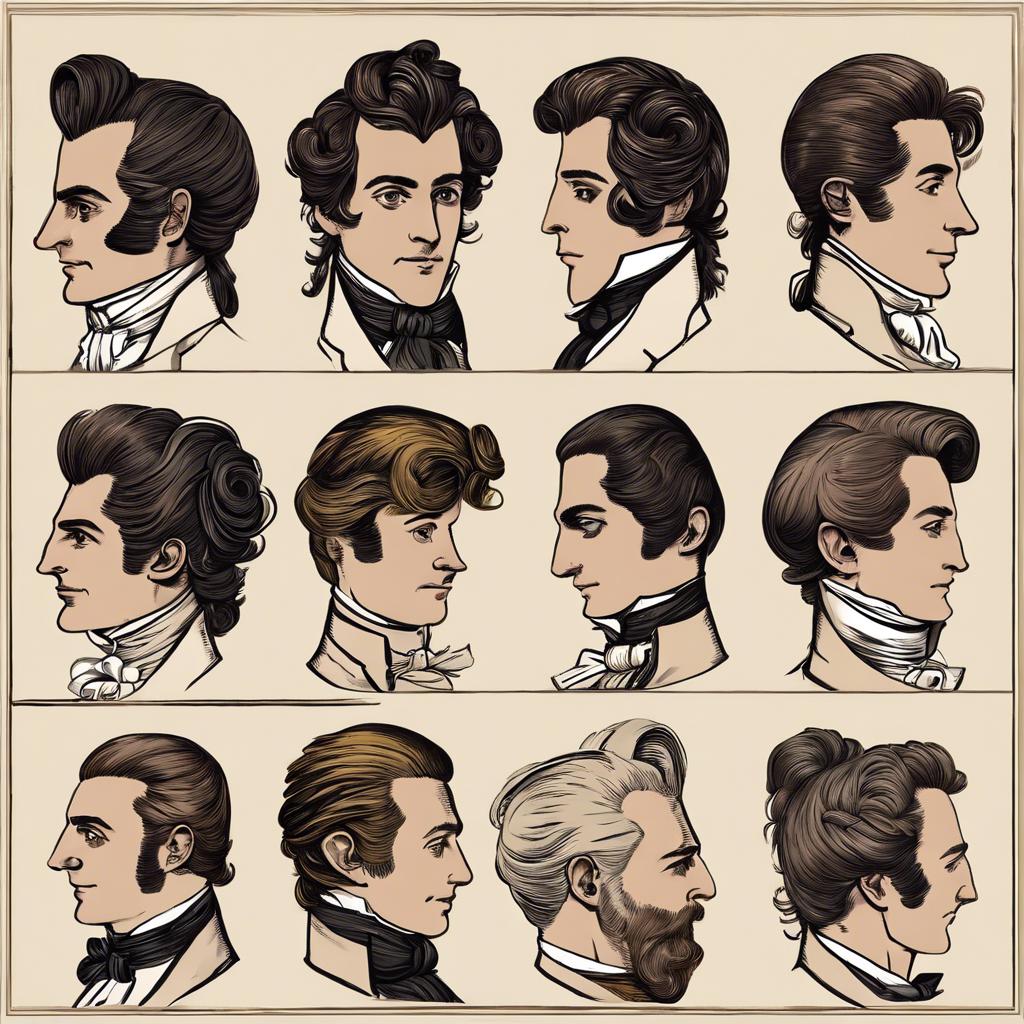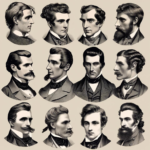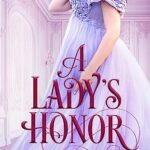During the Regency era in the early 19th century, men’s fashion underwent a dramatic transformation, including the popularization of elaborate and sophisticated hairstyles. From the elegant curls of the dandy to the sleek styles of the Beau Brummell, regency hairstyles were a reflection of the refined tastes and societal norms of the time. In this article, we will explore the various hairstyles that were popular among men during the Regency period, as well as the cultural influences that shaped these trends. Join us as we journey back in time to discover the artistry and complexity of regency hairstyles for men.
Step Into the World of Cheryl Bolen
Dive into the enchanting stories of love, intrigue, and elegance set in the Regency Era. Cheryl Bolen's novels offer timeless romance and captivating tales that will leave you wanting more.
Explore Cheryl Bolen's Books Now
Regency Fashion: The Evolution of Male Hairstyles
In the early 19th century, male hairstyles underwent a significant transformation during the Regency era. Men’s hair was styled in a more natural and flowing manner, moving away from the elaborate wigs and powdered hair of the previous Georgian period. This shift in fashion reflected a more relaxed and effortless approach to grooming, influenced by the romantic ideals of the time.
Key Features of Regency Men’s Hairstyles:
- Natural Curls: Men embraced their natural hair texture, allowing curls to flow freely and framing their faces in a soft and romantic way.
- Side-Parted: Hair was often styled with a side part, creating a more polished and refined look.
- Pompadour: The pompadour style, with height at the front of the hair and slicked-back sides, was a popular choice among fashionable gentlemen.
During the Regency era, men also began to experiment with different hair accessories to enhance their hairstyles. Decorative combs, ribbons, and even small hats were used to add flair and personality to their look. Regency fashion placed emphasis on simplicity and elegance, with male hairstyles reflecting the evolving style trends of the time.
Understanding the Elegance of Regency Era Mens Hairdos
The Regency era was a time of elegance and sophistication, and this was reflected in the hairstyles of men during this period. Men in the Regency era often wore their hair in a variety of styles that were designed to be both practical and stylish. From the classic short back and sides to the more elaborate curls and pompadours, Regency hairstyles were a true reflection of the fashion and style of the time.
One of the most iconic Regency era hairstyles for men was the ”Titus” cut, which featured short hair on the sides and back with longer curls on top. This style was named after the Roman emperor Titus, who was known for his distinctive hairstyle. The “Titus” cut was a popular choice among fashionable men in the Regency era, and it remains a classic style that exudes sophistication and refinement.
In addition to the “Titus” cut, men in the Regency era also sported other popular hairstyles such as the “Brutus” and the “Julius.” These styles featured a combination of short and long hair, with curls and waves that added a touch of elegance to any look. Whether worn in a formal setting or for everyday wear, Regency era hairstyles for men were a true reflection of the refined tastes of the time.
Tips for Achieving Authentic Regency Hairstyles for Men
Discover the key by following these expert guidelines:
1. Know the Historical Context: Familiarize yourself with the fashion trends and grooming practices of the Regency era to understand the specific hairstyles popular during that time.
2. Use Period-appropriate Styling Techniques: Experiment with curling irons, pomades, and hair powders to recreate the intricate curls and sleek updos commonly seen in Regency portraits.
| Tip | Description |
|---|---|
| 3. | Embrace the Side Part: Men in the Regency era often sported side parts, so consider incorporating this classic look into your hairstyle. |
Incorporating Regency Hairstyles into Modern Mens Fashion
Incorporating regency hairstyles into modern men’s fashion can add a touch of timeless elegance and sophistication to your look. This classic hairstyle, popularized during the Regency era in England, is characterized by its sleek and polished appearance. By giving a nod to this historical hairstyle, you can elevate your style and stand out from the crowd.
To achieve the regency hairstyle, consider the following key elements:
- Pompadour: The pompadour was a popular hairstyle during the Regency era and can be easily incorporated into modern men’s fashion. This hairstyle features the hair swept upwards and away from the face, creating a voluminous look that exudes confidence and style.
- Tight curls: Another hallmark of regency hairstyles is tight curls or ringlets. Whether you have naturally curly hair or need to use a curling iron, adding curls to your hairstyle can instantly give it a regency-inspired flair.
- Clean lines: Regency hairstyles are known for their clean and precise lines. Consider opting for a sharp side part or neatly combed back hair to achieve this polished look.
Incorporating regency hairstyles into your modern men’s fashion repertoire can be a fun and stylish way to pay homage to the past while embracing contemporary trends. Experiment with different variations of the regency hairstyle to find the perfect look that suits your personal style and complements your overall aesthetic. With a little creativity and attention to detail, you can effortlessly incorporate this timeless hairstyle into your everyday wardrobe.
Future Outlook
the regency era saw a shift in men’s hairstyles, with an emphasis on simplicity and sophistication. From the popular short, brushed back styles to the elaborate curls and sideburns, regency hairstyles for men were a reflection of the fashion and culture of the time. By understanding the historical context and trends of the regency period, we can appreciate the significance of hair as a symbol of status and style. As we look back at these iconic hairstyles, let us remember the elegance and grace of the regency era, and how it continues to influence fashion and grooming today.


